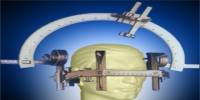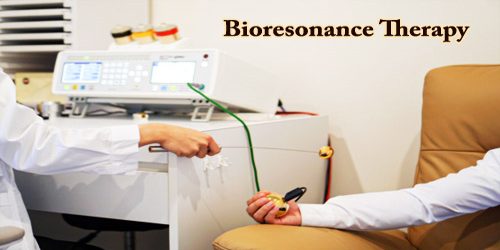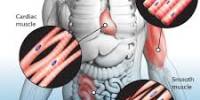Medical businesses must separate the active pharmaceutical ingredient from a suspension and dry it before producing the pills and tablets that treat a variety of ailments, aches, and pains.
A human operator is needed to keep an eye on an industrial drier, stir the material, and wait for the mixture to acquire the proper properties for compressing into medicine. The job depends heavily on the operator’s observations.
In a recent publication published in Nature Communications, researchers from MIT and Takeda discuss techniques for making that process less subjective and significantly more effective. The authors of the research develop a method to classify the rough surfaces that distinguish particles in a mixture using physics and machine learning.
The method, which employs a physics-enhanced autocorrelation-based estimator (PEACE), could alter how pills and powders are manufactured in the pharmaceutical industry, improving accuracy and efficiency while reducing the number of defective batches of pharmaceutical products.
“Failed batches or failed steps in the pharmaceutical process are very serious,” says Allan Myerson, a professor of practice in the MIT Department of Chemical Engineering and one of the study’s authors. “Anything that improves the reliability of the pharmaceutical manufacturing, reduces time, and improves compliance is a big deal.”
The team’s work is part of an ongoing collaboration between Takeda and MIT, launched in 2020. The MIT-Takeda Program seeks to address issues at the nexus of medicine, artificial intelligence, and health care by utilizing the expertise of both MIT and Takeda.
We utilize the physics to compensate for the lack of training data, so that we can train the neural network in an efficient way. Only a tiny amount of experimental data is enough to get a good result.
Qihang Zhang
In pharmaceutical manufacture, pausing an industrial-sized drier and removing samples from the production line for testing is typically required to determine whether a component is appropriately combined and dried. Artificial intelligence, according to Takeda researchers, could enhance the task and lessen production-slowing stoppages.
Initially, the research team intended to train a computer model to take the position of a human operator using videos. But selecting the films to train the model on still proved to be too arbitrary. Instead, the MIT-Takeda team chose to dry and filter particles while laser-illuminating them, then use physics and machine learning to determine the particle size distribution.
“We just shine a laser beam on top of this drying surface and observe,” says Qihang Zhang, a doctoral student in MIT’s Department of Electrical Engineering and Computer Science and the study’s first author.
The interaction between the laser and the mixture is described by a physics-derived equation, and the particle sizes are characterized by machine learning. According to George Barbastathis, professor of mechanical engineering at MIT and corresponding author of the study, the process doesn’t need to be stopped and started, making the entire task safer and more effective than normal operating procedure.
Because of how quickly the neural network can be trained thanks to physics, the machine learning algorithm also does not need a lot of datasets to learn how to do its job.
“We utilize the physics to compensate for the lack of training data, so that we can train the neural network in an efficient way,” says Zhang. “Only a tiny amount of experimental data is enough to get a good result.”
Today, only slurry products where crystals float in a liquid are employed as inline processes for particle assessments in the pharmaceutical sector. During the mixing process, there is no way to measure the individual powder particles. Slurries can be turned into powders, however after a liquid is filtered and dried, its composition changes and new measurements are needed.
“In addition to making the process quicker and more efficient, using the PEACE mechanism makes the job safer because it requires less handling of potentially highly potent materials,” the authors say.
The implications for pharmaceutical production could be profound, allowing for more cost-effective, efficient, and sustainable drug manufacture by minimizing the number of product development experiments required.
Monitoring the characteristics of a drying mixture is an issue the industry has long struggled with, according to Charles Papageorgiou, the director of Takeda’s Process Chemistry Development group and one of the study’s authors.
“It is a problem that a lot of people are trying to solve, and there isn’t a good sensor out there,” says Papageorgiou. “This is a pretty big step change, I think, with respect to being able to monitor, in real time, particle size distribution.”
Papageorgiou said that the mechanism could have applications in other industrial pharmaceutical operations. One day, video imaging may be trained by laser technology, enabling firms to perform analysis with cameras rather than lasers. The business is currently working to evaluate the instrument using several substances in its lab.
The results come directly from collaboration between Takeda and three MIT departments: Mechanical Engineering, Chemical Engineering, and Electrical Engineering and Computer Science.
As part of the MIT-Takeda Program, researchers from MIT and Takeda have collaborated on 19 projects over the last three years that have as their main goal the application of machine learning and artificial intelligence to issues in the healthcare and medical industry.
Often, it can take years for academic research to translate to industrial processes. However, scientists are optimistic that direct cooperation might accelerate that process. The fact that Takeda is close to the MIT campus allowed researchers to set up tests in the company’s lab, and immediate input from Takeda assisted MIT researchers in structuring their research in accordance with the company’s tools and methods.
Researchers can increase the likelihood that their experimental findings will have practical applications by combining the knowledge and goals of the two organizations. The group has already submitted applications for two patents and intends to submit a third.
















